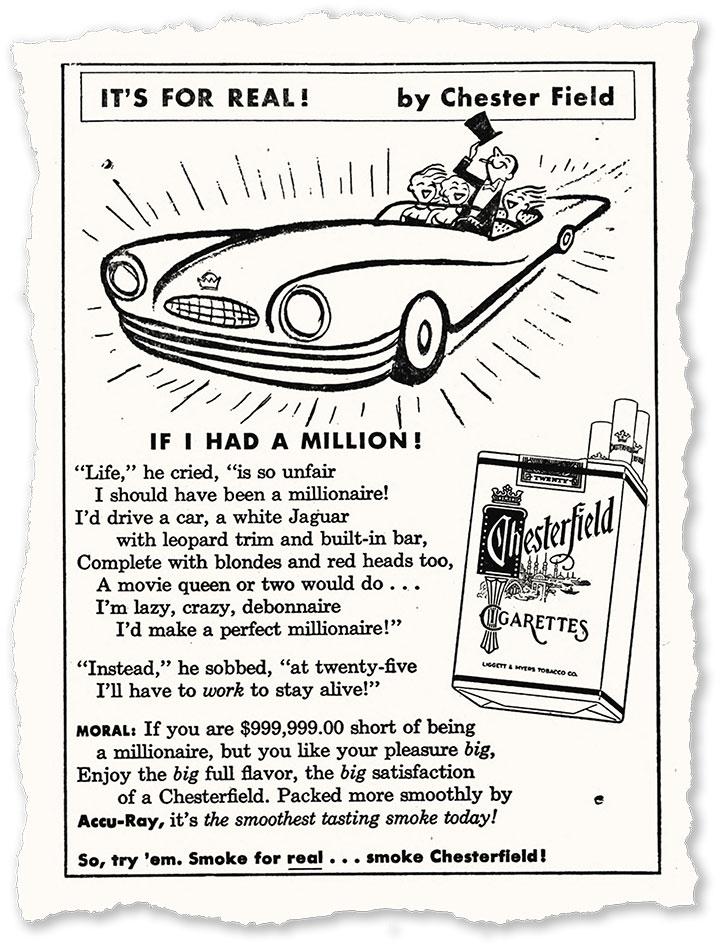
In the 1950s, cigarettes were omnipresent, their usage peaking in 1954, when 45 percent of American adults surveyed by Gallup reported they smoked. At a time before the dangers of tobacco had been publicly established by the federal government, cigarette makers promoted their products with abandon.
Although there are references in The Daily Princetonian to “smokers” — informal gatherings of students and faculty — and telltale photographs of Princetonians with cigarettes and pipes, including Presidents Harold W. Dodds *1914 and Robert F. Goheen ’40 *48, it is the profusion of ads in the Prince and other college newspapers that demonstrate tobacco’s reach.
During the first week of October 1956, for instance, six different brands vied for Princeton’s loyalty: Tareyton, Old Gold, Chesterfield, Camel, Lucky Strike, and Philip Morris. Old Gold — “so rich, so light, so golden bright!” — alone dominated two full pages on Oct. 1 as it introduced an eight-week, three-puzzle-a-week contest for “bona fide college students.” Those who successfully unscrambled the letters in each puzzle to spell the name of an American college or university could aspire to win one of 86 prizes, including a 40-day round-the-world tour for two.
Chesterfield offered riches by association, linking its cigarettes to high living and promising those who could only dream of wealth the consoling reality of “the smoothest tasting smoke today!” Eyeing Princeton’s all-male student body, Liggett & Myers Tobacco Co. invoked “blondes and red heads” and “a movie queen or two,” though this depiction of womanhood came second to a “Jaguar with leopard trim and built-in bar.”
Philip Morris took an indirect but scarcely subtle approach in the form of “On Campus with Max Shulman,” described by the Prince as “a weekly column of happy tripe, exulting the eternal virtues of Philip Morris cigarettes.” Carried by hundreds of college newspapers, it blurred the line between advertising and opinion, concluding, for good measure, with a plug from Philip Morris itself — in this case extolling “the perfect football companion.” It was, after all, October.
John S. Weeren is founding director of Princeton Writes and a former assistant University archivist.
